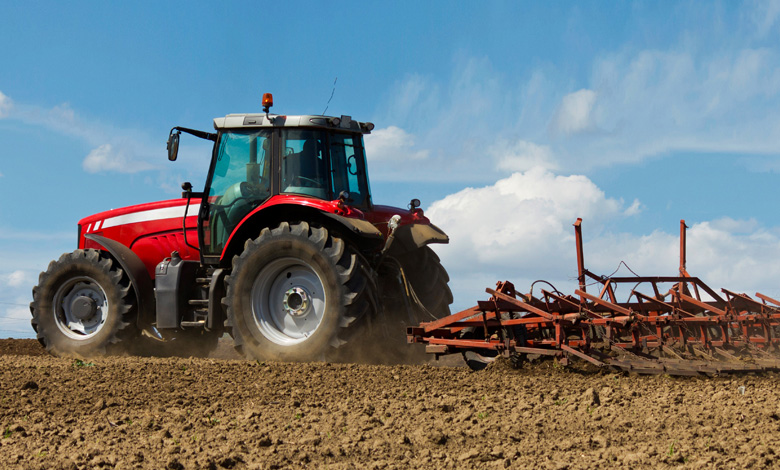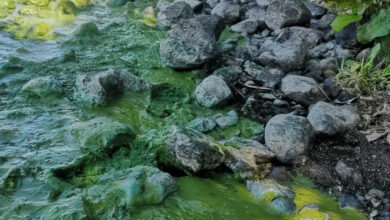Environment strategy: Reducing emissions

In March 2022, former Minister of Agriculture, Environment and Rural Affairs, Edwin Poots MLA, announced to the Northern Ireland Assembly the Environment Strategy, which aims to reduce water pollution, and become the overarching strategy which supports Northern Ireland’s environment.
The strategy exists under the umbrella of the Green Growth Strategy, the stated aim of which is to balance addressing climate change and improving the environment with developing the economy, although the aim is for the Environment Strategy to become the overarching umbrella strategy for environmental policy.
Whilst Northern Ireland’s greenhouse gas emissions have reduced since 1990, the reduction has been at a rate which is only half the UK average, with emissions in the transport and agricultural sectors increasing in the last 30 years.
The Climate Change Act, passed by the Northern Ireland Assembly prior to the election in May 2022, commits Northern Ireland to net zero CO2 emissions by the year 2050, although methane (CH4) emissions only have to be reduced from base levels by 46 per cent by the same year.
The Climate Change Act further commits a Northern Ireland Executive to set transitionary emissions targets for the years 2030 and 2040, something which has not yet been done due to the lack of an Executive.
Introducing the strategy in March 2022, Poots said: “It is envisaged that this Strategy will be adopted as Northern Ireland’s first ‘Environmental Improvement Plan’ which, subject to the approval of the Northern Ireland Assembly, will be a statutory requirement under the future UK Environment Act, setting the Strategy in a legal context and putting in place a statutory requirement to monitor environmental progress against the Strategy on an annual basis.”
Ammonia and agriculture
One of six strategic environmental outcomes which the draft document outlines is ensuring that there is an excellent quality of air, water, land, and neighborhoods.
Monitoring stations measuring the air quality were able to generate reliable data demonstrating the level of compliance with existing legislation. Of the three sites that measure PM2.5, all pollutants met the EU Stage 1 (25 µg/m3) and EU Stage 2 (20 µg/m3) limit values.
Whilst there are positive changes in some pollutant levels, the document states that there is still a problem with ammonia, which is mainly due to the prevalence of the agricultural sector in Northern Ireland, meaning that the air quality standards objective previously set out by the department has not been met.
96 per cent of Northern Ireland’s ammonia emissions come from agriculture. From 2010 to 2017 agricultural ammonia emissions increased by 20 per cent, reaching a level equivalent to the peak emissions of the late 1990s.
The report states that the rise has been due to increasing livestock numbers; greater use of indoor housing systems; and insufficient uptake of ammonia reduction measures. “The majority of designated sites are experiencing ammonia concentrations and levels of nitrogen deposition at which damage to plant life may occur.”
As a countermeasure, the draft document outlines the intention of the establishment of a clean air strategy before the end of 2022, although with no Executive, this appears unlikely to happen.
It furthermore proposes improving the infrastructure available to ensure high-quality data gathering and subsequent analysis of both air quality and traffic figures.
In addition, the draft document outlines the intention to create an ammonia strategy which will be integrated with the existing farm business support schemes, although there is no date which has been set as a target for this.
Improving water quality
Only 37 per cent of Northern Ireland’s water bodies are at a good environmental standard, according to the draft document, which adds: “Rivers and lakes are showing deterioration, whilst our coastal and transitional water bodies remain unchanged.”
Only one of Northern Ireland’s 21 freshwater lakes achieved a good environmental standard, in addition to only 31 per cent of the rivers in Northern Ireland.
It further raises the challenge posed by the current state of many freshwater sites due to increasing levels of phosphorus, which is causing 39 per cent of freshwater bodies to fail to reach a good environmental standard.
The solutions to this, according to the document, are centred around the implementation of the Living with Water in Belfast plan, which was published by the Department for Infrastructure in 2021.
In addition to this, the publication of the Water Resource and Supply Resilience Plan, which is due to be completed before the end of 2022, is seen as being of paramount importance, although, as with many schemes which have not yet been published, it faces potential delay due to the lack of a functioning Executive in Northern Ireland.
The strategy is also focused on the publication of conservation management plans and site nutrient action plans.
The strategy sets a target for 2027 of 70 per cent of Northern Ireland’s water bodies being at a good environmental standard as well as achieving the sustainable management and efficient use of natural resources including water and soils, which will work in tandem with an increase in investment in water treatment infrastructure, and the measures which have been outlined in the river basin management plans.
Reforming agriculture
The agricultural sector is the main sector which needs to reduce emissions in Northern Ireland, currently contributing 5.5 MtCO2e, as of 2020, which is 26.6 per cent of the overall greenhouse gas emissions in Northern Ireland.
This is compared with respective figures of 9 per cent in England, 15.6 per cent in Wales, and 18.4 per cent in Scotland.
The sector retains a lot of economic influence in Northern Ireland, with an increase in the populations of cattle, pigs, and sheep having been consistently recorded over the last decade.
Consequently former Minister of Agriculture, Environment and Rural Affairs, Edwin Poots MLA, acted to ensure that the initial proposal for net zero methane emissions – as demanded in the original Bill which led to the Climate Change Act – was reduced to a target of a 46 per cent reduction by 2050.
The document states that there will be a public consultation on any future policy proposals which reform the agricultural sector.
It further states that the future model for agriculture should be: “An industry that: is environmentally sustainable in terms of its impact on, and guardianship of, air and water quality, soil health and biodiversity, while making its fair contribution to achieving net zero carbon targets; pursues increased productivity in international terms as a means of sustained profitability, closing the productivity gap which has been opening up with other major suppliers.”
It further states that the agricultural sector should display “improved resilience to external shocks which are ever more frequent and to which the industry has become very exposed; and which operates within an integrated, profitable, efficient, sustainable, competitive and responsive supply chain, with clear transmission of market signals and an overriding focus on high quality food and the end consumer”.
Announcing the strategy to the Assembly in March 2022, Edwin Poots MLA outlined a reform in agriculture funding. “There will be progressive capping of the farm sustainability payment above £60,000 per farm business. I have listened to the significant and numerous concerns raised by stakeholders about my proposals for a minimum claim size, and I have decided to set that minimum claim size at five hectares for the farm sustainability payment.”
Enhancing green energy
Under the 2010 Strategic Energy Framework, the Northern Ireland Executive set a target that 40 per cent of electricity consumed in Northern Ireland would come from renewable sources by 2020. For the 12 month period ending 30 June 2021, 45.4 per cent of total electricity consumption in Northern Ireland was generated from renewable sources located here, largely from onshore wind penetration.
This has led to a significant decrease in greenhouse gas emissions from the energy supply sector which has seen a 45 per cent reduction
(-2.4 MtCO2e) between 1990 and 2018. While laudable, it should be borne in mind that the energy supply sector still accounts for 15 per cent of all greenhouse emissions in Northern Ireland.
The Energy Strategy, published in 2021, commits Northern Ireland to establishing a support scheme for renewable electricity, although it is not yet clear what form his will take.






